Opinion
Dr. Lal Samarakoon (01-09-1955-12-07-2024)
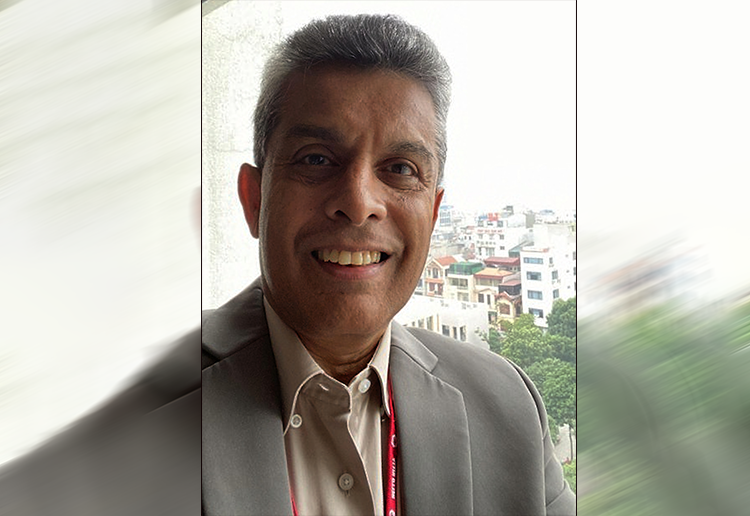
Dr. Lal Samarakoon was born in Dehipe, Padiyapalella, Nuwara Eliya. He had his primary education at Gampola Zahira College and Ratnapura Ferguson College, and entered the University of Kelaniya from Matale Science College.
Obtaining a B Sc. degree in Physical Science with a first class, he qualified as a Surveyor from the National Survey Department and started serving the Mahaweli Development Program in Girandurukotte in 1986. Lal was awarded a Monbusho Scholarship, by the Government of Japan to obtain the Doctor of Philosophy degree in remote sensing from the university of Ehime.
He served Nippon Koei, a planning, design and construction company for several years. In 1998, Lal was appointed the Director of Geoinformatics Center of the Asian Institute of Technology, Thailand. He served in this position till 2018.
Dr. Lal Samarakoon has represented a generation that has seen the disaster risk management discipline transition from the sidelines of a welfare-oriented subject to a full-fledged discipline, which has emerged as a component of development discourse subsequently. He was a deep-thinking technocrat, innovative scientist, and dependable professional who firmly believed technology applications are needed to manage disasters and build climate resilience in Asia.
He observed the significant capacity gaps that exist in Asia in applying remote sensing and GIS tools in disaster risk management, and supported the countries in the Asia region to reduce these capacity gaps over the last 30 years. During his longstanding career at the Geoinformatics Center of the Asian Institute of Technology (AIT) he developed methodologies which provided better exposure for disaster management professionals in the region to use spatial information in Disaster Risk Management.
He successfully partnered with other international technical and academic institutes, including with the postgraduate Institute of Science in Sri Lanka, broadening the objectives and opportunities for cross-learning. His work was instrumental to prove that scientific advancement can be utilized successfully and cost-effectively to improve disaster risk management and climate adaptation practices.
His work as a scientist supported applying spatial data in several countries in the Asia region; the Lao PDR, Cambodia, Vietnam, Nepal for disaster risk reduction. Dr. Samarakoon will be remembered for his pioneering and outstanding contributions to Sri Lanka, and other countries in the Asia region with scientific innovation, training, education and policy support. His untiring efforts have helped create a pool of disaster risk management practitioners in mandated institutions, a much needed contribution for meeting the current day disaster and climate risk challenges.
May he attain nibbana,
N.M.I.S. Arambepola
Nirmala Fernando
Madhavi Malalgoda Ariyabandu
Opinion
Key to resilient plantation agriculture in Sri Lanka

Sustainable soil health:
by Lalin I De Silva
With the escalating impacts of climate change, Sri Lanka’s plantation sector—spanning tea, rubber, coconut, spices, and oil palm—faces critical challenges in maintaining soil health. As fluctuating weather patterns affect nutrient availability and increase erosion, achieving sustainable crop productivity requires rethinking soil management. This article explores why a shift to adaptive soil practices is essential, discussing the role of nutrient management, organic matter enhancement, and precision techniques that can support a climate-resilient future for Sri Lankan planters.
Understanding Soil Health and Climate Adaptation
In Sri Lanka, where agriculture is deeply interwoven with economic stability and cultural heritage, soil is a foundational asset. Healthy soil not only sustains high yields but also contributes to carbon sequestration and water retention. However, climate change introduces frequent rainfall variability, which accelerates nutrient leaching, affects soil structure, and increases erosion risk—especially in sloped plantation areas common in tea production. Understanding the specific nutrient needs of each crop and adapting soil practices accordingly can help mitigate these adverse impacts.
Key Soil Nutrients and Their Importance
The macronutrients nitrogen (N), phosphorus (P), and potassium (K) play vital roles in crop health, but their optimal levels vary between plantation crops:
Nitrogen (N): Essential for foliage growth, nitrogen requirements are particularly high for tea, which thrives with approximately 20-25 mg/kg. For other crops like coconut and oil palm, nitrogen supports broader canopy development, which is important for resilience against drought.
Phosphorus (P): Phosphorus supports root development, critical in early plant growth and essential for strong, resilient crops. A good level for most plantation soils falls between 10-30 mg/kg, depending on soil type and crop. Coconut, which requires strong roots for water absorption, greatly benefits from adequate phosphorus levels.
Potassium (K): Often called the “quality nutrient,” potassium improves crop resilience and quality. For example, tea thrives with potassium levels of 120-150 mg/kg, while rubber and coconut need slightly higher levels to promote nutrient distribution across the plant structure, supporting resilience during dry spells.
Tailoring Soil Practices for Plantation Resilience
Plantations must adopt region-specific soil management practices to meet crop needs while minimizing environmental impact. Here are some effective techniques for sustainable soil management:
Cover Crops and Erosion Control: By planting cover crops like legumes, farmers can reduce erosion while adding nitrogen to the soil naturally. Cover crops shield soil from heavy rain, reducing topsoil loss and adding organic matter as they decompose, which improves nutrient availability and soil structure over time.
Organic Matter Management: Increasing organic matter in the soil improves moisture retention and overall fertility. Applying compost, mulches, or green manure boosts organic carbon levels, which is particularly beneficial in tropical climates with high decomposition rates. Mulching, for instance, helps regulate soil temperature, retain moisture, and add essential nutrients as it decomposes.
Biochar Application: Biochar, a type of charcoal added to the soil, improves water retention, nutrient availability, and microbial health. In tea estates or high-rainfall areas, biochar acts as a stabilizer, helping the soil retain nutrients that might otherwise be washed away. Its porous structure holds onto moisture, benefiting root health during dry periods.
Precision Fertilisation
Implementing a targeted fertilisation approach ensures the soil receives just the nutrients it needs. Slow-release fertilisers and digital soil sensors reduce nutrient leaching, prevent over-application, and support a balanced nutrient profile. For example, the use of a portable spectrophotometer can measure soil nutrient levels, guiding adjustments that enhance productivity and reduce waste.
Carbon Sequestration Techniques: Practices like agroforestry and low-tillage farming promote carbon storage in the soil, contributing to climate resilience and soil fertility. By integrating trees with crops, agroforestry not only sequesters carbon but also protects against soil erosion and provides shade, which reduces crop stress during high temperatures.
Implementing Soil Testing and Monitoring
For Sri Lankan planters, regular soil testing and monitoring are essential to maintain optimal soil health. Digital tools such as portable pH meters, EC (Electrical Conductivity) meters, and NPK soil test kits provide valuable data on soil composition and health. By regularly testing for pH, organic carbon, and nutrient levels, planters can make informed decisions on crop nutrition and soil amendments. Mapping plantation areas using handheld GPS devices also aids in precision agriculture, allowing farmers to apply fertilizers and water only where necessary, minimizing environmental impact.
Promoting Soil Biodiversity and Microbial Health
Healthy soils host a diverse range of micro organisms, essential for nutrient cycling and disease suppression. Adopting organic inputs and minimising chemical usage help sustain beneficial bacteria, fungi, and earthworms, all of which improve soil structure and fertility. Mycorrhizal fungi, for instance, form symbiotic relationships with plant roots, enhancing phosphorus uptake and strengthening plants against drought stress. Encouraging these organisms through organic farming practices is a vital component of sustainable soil health.
Way Forward: Embracing a Soil-Centric Approach in Sri Lanka
Sri Lankan planters face unique challenges from climate change, but by adopting a soil-centric approach, they can maintain crop yields and enhance environmental resilience. Partnerships with agronomists and value chain consultants can assist in identifying effective practices suited to local soil types and climate conditions. Additionally, government support for sustainable farming incentives and education initiatives would empower farmers to adopt these practices.
Implementing soil-friendly practices at scale requires both knowledge-sharing and community cooperation. Initiatives like training programes in precision agriculture, digital tools for soil monitoring, and organic fertiliser subsidies could be valuable. By aligning these practices with Sri Lanka’s climate resilience goals, the plantation sector can enhance productivity sustainably.
Maintaining healthy soils is not only a matter of crop productivity; it is a defence strategy against the unpredictable impacts of climate change. Through sustainable soil management practices—such as increasing organic matter, precise nutrient application, and encouraging soil biodiversity—Sri Lanka’s planters can create resilient agricultural systems that support long-term economic stability. Embracing these practices will enable the plantation sector to flourish sustainably, preserving the environment while continuing to contribute to the nation’s economy. With a soil-centric approach, the future of Sri Lankan agriculture holds promise for both productivity and resilience in the face of climate change.
Lalin I De Silva is a value chain journalist of www.vivonta.lk, Senior Planter, Agricultural Advisor / Consultant, Secretary General of Ceylon Planters Society, Editor of Ceylon Planters Society Bulletin and freelance journalist.
Opinion
Dress code for MPs
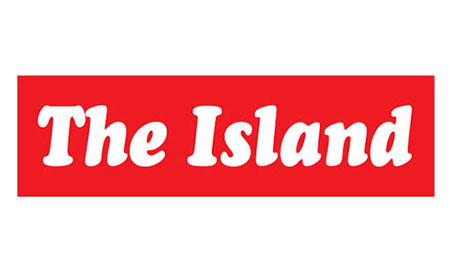
Why does B. Perera, in The Island of November 11, ask for an official dress code for our parliamentarians, including the President and Prime Minister, when he himself acknowledges that these individuals have traditionally attended official functions in appropriate attire? This made me curious, prompting me to review TV footage of meetings attended by the current President and the other two ministers. Unfortunately, I observed our Prime Minister, who also serves as the education minister, addressing a gathering of female teachers admirably well-dressed in sarees, while she was wearing a salwar suit.
Let’s avoid harsh criticism of B. Perera and myself for expressing our views; saying, she embodies the common person’s Prime Minister, without any pretence.
A Ratnayake
Opinion
Bitter truth about laws and animal welfare

Draft Animal Welfare Bill
National Dog Spay and Rabies Eradication Programme
Draft Animal Welfare Bill
By 2023 when the Draft Animal Welfare Bill was taken up for its first reading in Parliament, it has been made into a legal mess, denying legal protection to animals from cruelties.
In June 2023 our Coalition intervened and by March 2024 we got Parliamentary Sectoral Oversight Committee (SOC) to approve amendments that would make this bill exemplary, offering legal protection to all animals from cruelties, coupled with fines increased from Rs. 100,000 to 250,000- 500,000 to Rs. 5 million for animal abuse, with the fines doubling for abuse of pregnant animals.
But even after that Constitutional intervention and clear instructions to the relevant Ministry by the SOC to include the approved amendments, the Bill was prepared by that Ministry for the Second Reading in Parliament, dropping many crucial PARLIAMENTARY SOC-APPROVED AMENDMENTS.
Fortunately for the Animals of Sri Lanka, the Draft Bill was not taken up for the Second Reading.
The Parliament stands dissolved.
Attention President, Minister of Agriculture and Minister of Justice: This draft Bill must be presented in Parliament again ONLY after including the SOC-APPROVED AMENDMENTS.
Anyone trying to scuttle the process to pass a Bill that comprehensively provides legal protection to animals citing ANY reason, cannot have animal welfare in their hearts and minds.
2) The National Dog Spay and Rabies Eradication Programme
All one has to do is to travel round Sri Lanka to witness the enormous numbers of ownerless dogs, some in shocking conditions, to judge how “efficient and sustainable result-oriented” the National Dog Spay and Rabies Eradication Programme has been, after functioning under the Health Ministry with contract veterinarians for 15 years since 2008 till now, at a budgetary allocation ranging from Rs.100 million to Rs. 280 million annually.
Right now Rs. 200 million has been allocated to this fruitless, unmonitored, unevaluated activity, to SUSTAIN A BUSSINESS and not an accountable programme.
The move to have this programme executed by the ONLY State Entity that is responsible for handling and eradicating zoonotic diseases, the Department of Animal Production and Health (DAPH), having recruited 500 additional veterinarians, was scuttled in 2019, and the Programme was taken back to the Ministry of Health, a State entity responsible for diseases that afflict humans and not animals and hence has no Veterinarians, for BUSINESS AS USUAL.
Attention President, Minister of Health, and Minister of Livestock: This programme must be immediately vested in the DAPH so it can be made into a scientifically executed, accountable, sustainable-results-generating programme that can be monitored and evaluated regularly.
Such a scientific, professional, and systematic DAPH-executed accountable programme, coupled with Owned Dog Registration will see significant results in two years towards zero dog population growth and dog rabies control towards eradication.
CPAPA – SL (The Coalition for a Pro-Animal Protection Act – Sri Lanka)
-
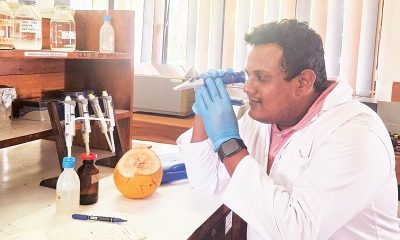
 Life style5 days ago
Life style5 days agoKing of coconuts heads for a golden future
-

 Latest News6 days ago
Latest News6 days agoColombo district preferential votes announced
-
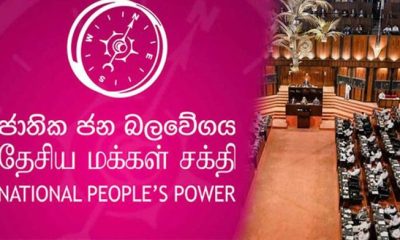
 News4 days ago
News4 days agoNPP appoints two defeated candidates as NL MPs
-
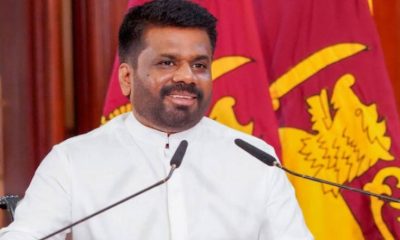
 News6 days ago
News6 days agoPresident warns his party: “We will fail if we view power as an entitlement to do as we please”
-

 News3 days ago
News3 days ago‘Gas Cylinder’ explodes; Ranil flays NDF Secy. for submitting Ravi’s name
-
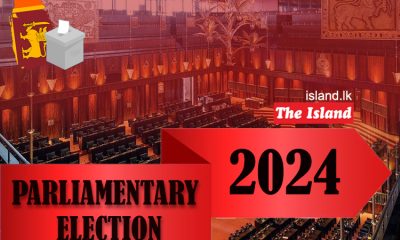
 Latest News7 days ago
Latest News7 days agoGampaha district: NPP 16, SJB 3
-

 Sports3 days ago
Sports3 days agoMaking batting compulsory for bowlers has worked – Theekshana
-

 Editorial6 days ago
Editorial6 days ago‘Maroon Wave’ and AKD Magic











